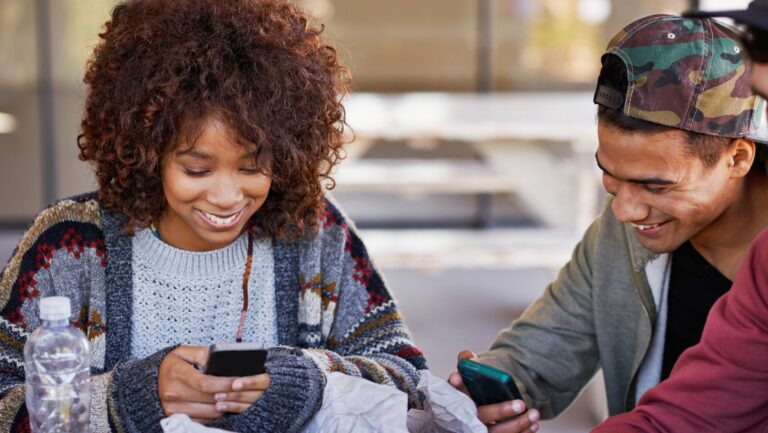Using Social Media to Spread the Word About Your Party
Parties Use Social Media for Which of the Following?
Parties utilize social media for a wide range of purposes, each serving their unique goals and objectives. From political campaigns to marketing strategies, social media has become an integral tool in reaching and engaging with the masses. In this article, we will explore the various ways in which parties leverage social media platforms to achieve their desired outcomes.
One key aspect where parties employ social media is for expanding their reach and visibility. With billions of users actively using platforms like Facebook, Twitter, and Instagram, political parties can tap into this vast audience pool to disseminate their messages, promote their candidates, and enhance brand recognition. Social media allows them to target specific demographics and geographical areas with tailored content that resonates with the intended audience.
Additionally, parties also use social media as a means of fostering direct communication and engagement with supporters. Platforms like Twitter enable politicians to share real-time updates, engage in conversations with constituents, address concerns or criticisms promptly. This two-way interaction helps build trust and credibility among voters while providing an avenue for parties to gauge public sentiment on relevant issues.
Moreover, social media plays a crucial role in fundraising efforts for political campaigns. Parties can leverage these platforms by running targeted ad campaigns aimed at soliciting donations from supporters or organizing virtual fundraising events where individuals can contribute towards a cause or candidate they believe in.
Overall, it’s evident that social media has transformed the landscape of party politics by offering new avenues for communication, outreach, and mobilization. As we delve deeper into this topic throughout the article, we’ll discover even more ways in which parties effectively utilize these digital tools to shape public opinion and drive their agendas forward.
Why do Parties Use Social Media?
Building an online presence In today’s digital age, political parties recognize the power of social media in reaching a wider audience and building an online presence. By utilizing platforms like Facebook, Twitter, Instagram, and YouTube, parties can establish their brand identity and connect with potential supporters on a more personal level.
They can share updates about their campaigns, highlight key policy positions, and showcase the behind-the-scenes activities of their candidates. Social media allows parties to amplify their message and engage with a larger segment of the population who are active users of these platforms.
Engaging with supporters One of the primary reasons why parties use social media is to engage with their supporters. These platforms provide a direct line of communication between politicians and voters, allowing for real-time interactions and feedback. Parties can conduct live Q&A sessions, host virtual town halls, and participate in online debates to address concerns or clarify their stances on important issues.
Social media also enables parties to mobilize volunteers for campaign activities such as door-to-door canvassing or phone banking. By actively engaging with supporters through likes, shares, comments, and retweets, parties can foster a sense of community among their followers.
Expanding reach beyond traditional methods Social media offers political parties the opportunity to expand their reach beyond traditional campaign methods. While rallies, town hall meetings, and TV advertisements still hold significance in election campaigns; using social media provides an additional avenue for outreach. It allows parties to target specific demographics through tailored content strategies based on user preferences and behaviors.
Moreover, it enables them to capture the attention of younger voters who are more likely to consume news and participate in political discussions through digital channels rather than conventional mediums.
Which Social Media Platforms do Parties Use?
Parties today recognize the immense power and reach of social media platforms in connecting with their audience. Whether it’s to engage supporters, spread their message, or mobilize voters, political parties have embraced various social media platforms as part of their digital strategy. Let’s explore some of the popular platforms that parties use:
Facebook remains a dominant force in the social media landscape and is widely utilized by political parties for campaigns and communication. With its vast user base and robust advertising capabilities, parties can target specific demographics and geographic regions effectively. They can create pages to share updates, photos, videos, event details, and connect with supporters through comments and messages.
Twitter has become a go-to platform for real-time engagement and rapid dissemination of information. Political parties leverage this platform to share concise messages, campaign slogans, policy updates, live event coverage, and engage in public conversations through hashtags. It allows them to connect directly with their followers while also monitoring public sentiment.
Instagram’s visual nature makes it an ideal platform for political parties to showcase behind-the-scenes moments, humanize candidates through personal stories and images, and highlight events through captivating visuals. From campaign rallies to volunteer activities, parties can utilize Instagram stories, posts with relevant hashtags, polls or Q&A sessions in Stories feature to interact with their followers effectively.


